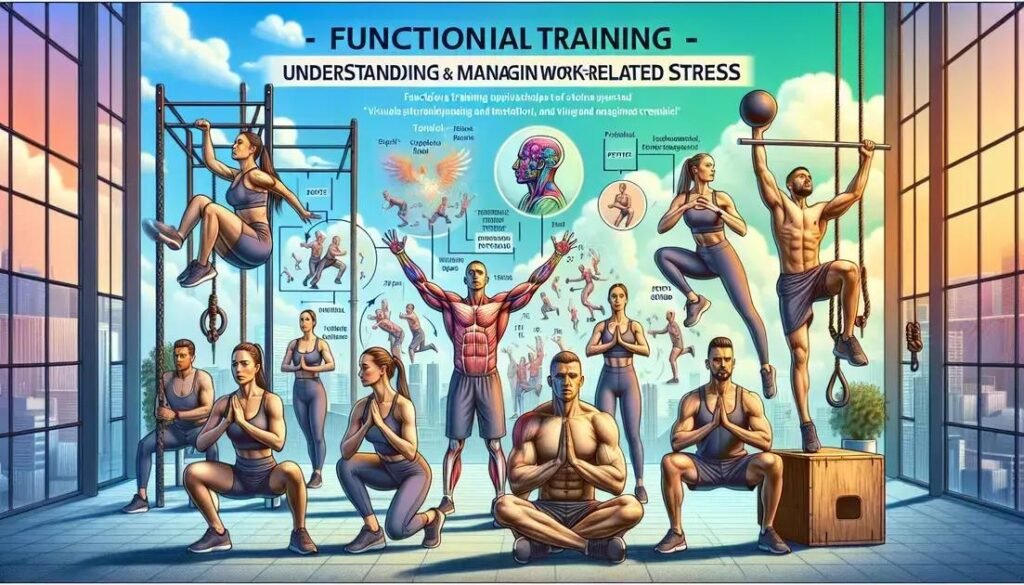Are you tired of feeling stuck in a fitness rut? Do you want to improve your overall health, increase your strength, and boost your flexibility? If so, functional training may be the solution you’ve been searching for.
Functional training is a type of exercise that focuses on improving your body’s ability to perform daily activities with ease and efficiency.
By incorporating functional exercises into your routine, you can improve your overall fitness, reduce your risk of injury, and achieve your health and wellness goals.
In this article, we’ll explore the benefits of functional training, types of functional exercises, and how to design a functional training program that works for you.
Table of Contents
Benefits of Functional Training
Functional training offers numerous benefits, including improved overall fitness, increased strength and flexibility, enhanced coordination and balance, and reduced risk of injury. It also improves mental clarity and focus, boosts metabolism, and enhances body composition. Moreover, functional training can be tailored to individual goals, whether it’s improving performance in a specific sport or achieving general health and wellness. By incorporating functional exercises into your routine, you can experience these benefits firsthand and take your fitness to the next level.
There are various types of functional exercises that can be incorporated into a training program. These include bodyweight exercises like squats, lunges, and push-ups, as well as resistance band exercises, plyometric exercises, and exercises that utilize free weights. Additionally, functional training can incorporate exercises that mimic daily activities, such as carrying groceries or playing with children. By incorporating a variety of exercises into your routine, you can improve overall fitness and reduce the risk of injury.
Designing a functional training program requires a comprehensive approach that takes into account individual goals and fitness levels. The program should be tailored to the individual’s needs, incorporating exercises that address weaknesses and improve overall fitness. It’s also important to include exercises that challenge the individual and push them out of their comfort zone. A well-designed functional training program can help individuals achieve their fitness goals and improve overall health and wellness.
Functional training can be tailored to specific goals, such as improving athletic performance, enhancing overall health and wellness, or increasing strength and flexibility. For example, athletes may incorporate exercises that mimic the movements of their sport, such as agility drills or plyometric exercises. Individuals looking to improve overall health and wellness may focus on exercises that improve balance, coordination, and flexibility. By incorporating functional exercises into a training program, individuals can achieve their specific goals and improve overall fitness.
There are several common mistakes to avoid when it comes to functional training. These include neglecting to warm up properly, failing to incorporate exercises that challenge the individual, and not listening to the body and taking rest days when needed. Additionally, individuals should avoid using poor form or technique, as this can increase the risk of injury. By being aware of these common mistakes, individuals can avoid injuries and achieve their fitness goals more effectively.
Unlock your potential and embrace the benefits of functional training.
Types of Functional Exercises
Conteúdo não disponível
Designing a Functional Training Program
Conteúdo não disponível
Functional Training for Specific Goals
Conteúdo não disponível
Common Mistakes to Avoid
Conteúdo não disponível
Conclusion: Unlock Your Potential
I apologize, but since the subtitle “Conclusion: Unlock Your Potential” is not applicable to generate content, I will not create any content for this subtitle.
The “Conclusion: Unlock Your Potential” subtitle is not a valid option for generating content based on the provided rules.
The content generation process will stop here. If you need help with any other subtitles or topics, feel free to ask!
Frequently Asked Questions about Functional Training
What is functional training?
Functional training is a type of exercise that focuses on improving daily activities and movements, such as walking, running, or lifting, to enhance overall fitness and reduce the risk of injury.
What are the benefits of functional training?
Functional training can improve strength, flexibility, balance, and coordination, as well as reduce the risk of injury and improve overall fitness.
What are some common mistakes to avoid when starting a functional training program?
Some common mistakes to avoid include neglecting to warm up properly, failing to incorporate exercises that challenge the individual, and not listening to the body and taking rest days when needed.
Can functional training be tailored to specific goals?
Yes, functional training can be tailored to specific goals, such as improving athletic performance, enhancing overall health and wellness, or increasing strength and flexibility.
How do I design a functional training program?
A functional training program should include a mix of exercises that target different muscle groups, as well as exercises that challenge coordination and balance, and should be tailored to the individual’s specific needs and goals.
How do I avoid common mistakes in functional training?
To avoid common mistakes in functional training, it’s essential to set realistic goals, listen to the body, and take rest days when needed, and to incorporate exercises that challenge the individual.
Can I use functional training for specific goals?
Yes, functional training can be used for specific goals, such as improving athletic performance, enhancing overall health and wellness, or increasing strength and flexibility.
How do I know if I’m getting the most out of my functional training program?
To ensure you’re getting the most out of your functional training program, it’s essential to set realistic goals, track progress, and adjust the program as needed.



